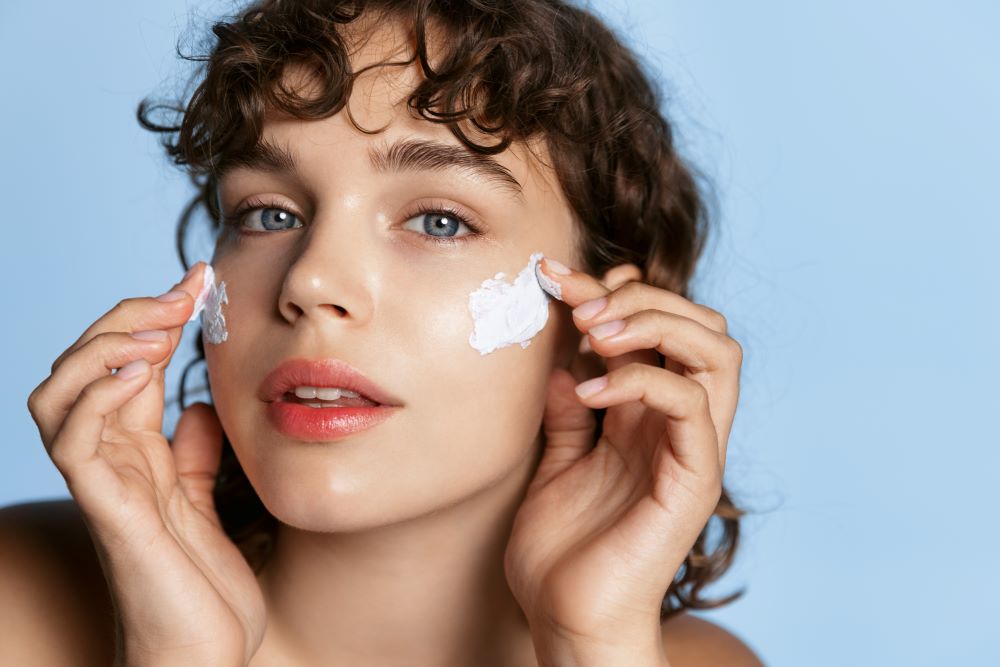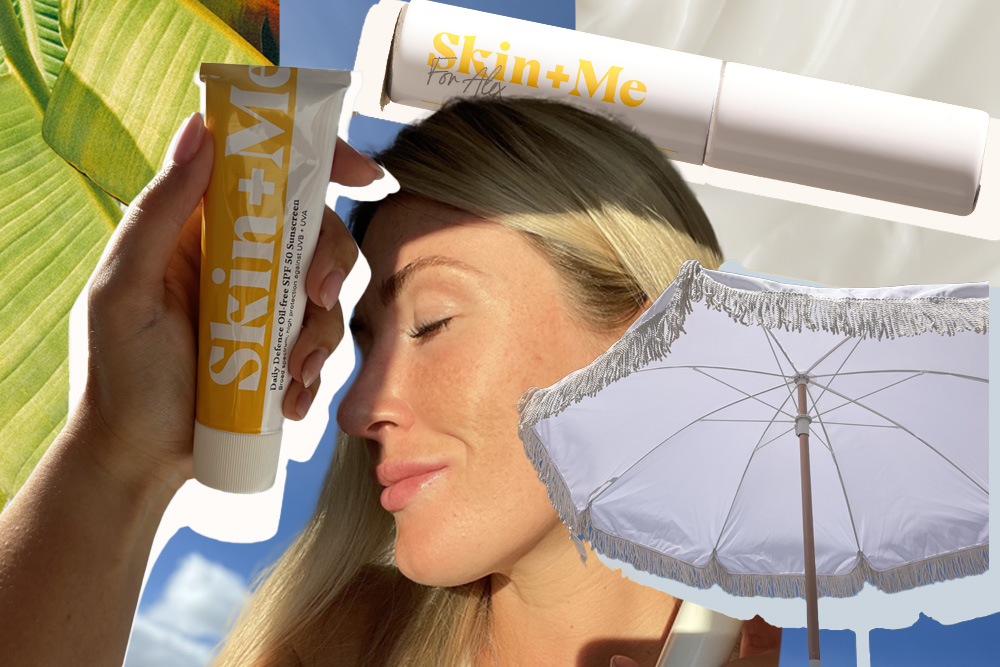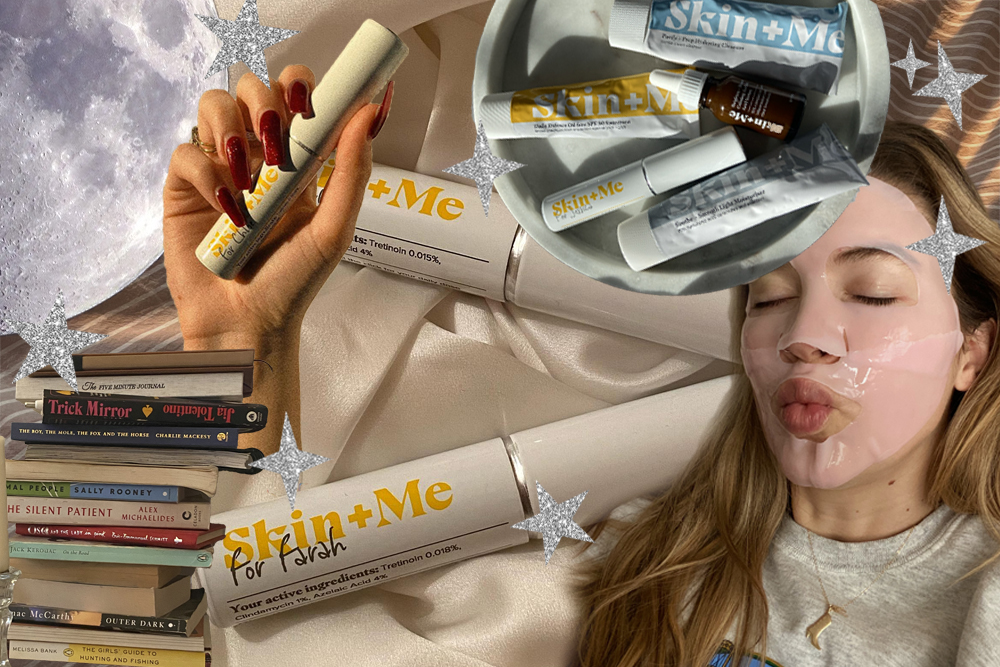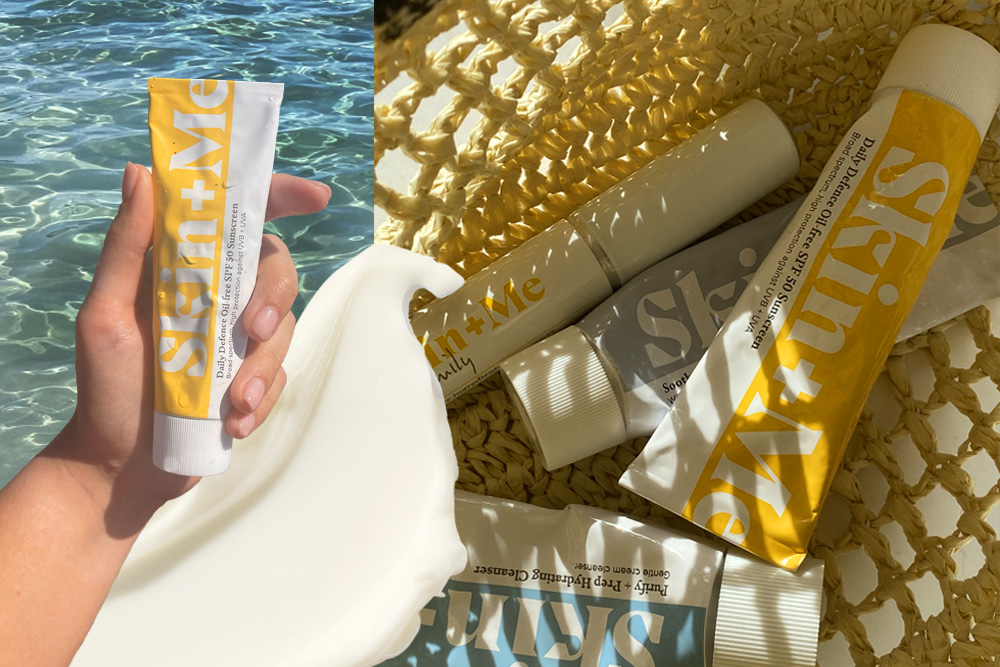Melasma 101

Link to share article here:
Ask A Dermatologist: How To Relieve Dry, Flaky Skin
Regardless of your skin type, we’re all prone to a dry skin moment. It could be a result of a cold-weather blast, your skin barrier reacting to a new product and peeling off, or from hormonal changes.
However it happens, it’s a good idea to have a few tips and tricks up your sleeve. We sat down with our expert Dermatology Team for the best ways to relieve and prevent dry flaky skin.
Our dos and don’ts for relieving dry, flaky skin
Dr Jason Thomson, Head of Medical at Skin + Me, explains that dry skin is caused by a lack of hydration, “Either the skin barrier (the outer layer of the skin) is not doing its job of keeping moisture in, or it’s not producing enough oil and this results in dull, flaky, tight, sometimes itchy and inflamed skin.”
DOs
Hydrate! Hydrate! Hydrate!
It’s obvious, but it’s always worth reminding. Applying moisturiser daily is really important for your skin, especially if you’re using a targeted treatment.
Dr Jason tells us, “Regardless of the underlying cause of the dryness, adding hydration with a regular moisturiser should be an essential part of your daily skincare routine.”
Adapt your routine
You might need to make some smart swaps to your skincare routine if you find your skin visibly drier than normal. Using a hyaluronic acid serum before your moisturiser is a great way to bolster your skin-moisture levels.
You could also try moisture-sandwiching – wetting your skin with water and locking it in with your moisturiser, or buffering – applying your moisturiser before your active treatments to slow them down. You could also give a moisturising face-mask a try.
“There’s a huge variety of moisturisers out there but they’ll normally contain three main moisturising ingredients: humectants, emollients and occlusives.”
dr jason thomson
Check the ingredients list
The best ingredients for dry skin are hydrators and moisturisers. The most common hydrators are humectants, such as hyaluronic acid, glycerin, allantoin and betaine, which attract and retain skin-moisture, binding water to the skin. These also suit acne-prone skin as they’re unlikely to clog your pores and lead to blemishes.
Moisturisers like emollients (shea butter, lanolin, cocoa butter, petrolatum) and occlusives (paraffin, squalene, dimethicone, candelilla) form a film over the skin to prevent moisture-loss. You’ll find emollients in thicker moisturisers for dry skin, while occlusives are usually found in ultra-thick moisturisers, balms and salves (usually for lips, hands and feet).
Other great moisturising ingredients include ceramides, a type of fatty lipid that occur naturally in the skin, and cica, the short name for Centella asiatica which is a plant-based skin soother, great for inflammation and barrier repair.
If you want to prevent dry skin through the products you use, our Dermatology Team recommend avoiding ingredients that could damage your skin barrier like alcohol, fragrances, soaps and scrubs, particularly if you have an ongoing skin concern like rosacea.
DON’TS
Don’t over-cleanse
Cleansing is a really important part of your skincare routine, but don’t overdo it! If you’re using a micellar water to remove your makeup, be gentle with your skin.
It also goes without saying that a physical exfoliant (cleansing scrubs, rough flannels or cloths) are a no-no. Dr Jason reminds us, “physical exfoliation in the form of scrubs or other mechanical cleansers is more likely to damage your skin barrier leading to irritation and breakouts.” Instead, stick with a cotton flannel or a reusable cotton pad.
If you have oily skin, you could switch from a micellar water to a cleansing milk (we like Avene’s Gentle Milk Cleanser), followed by your chosen Purify + Prep Cleanser. If you have a dry skin type, you might prefer to use a cleansing balm to remove makeup and then use Purify + Prep Hydrating Cleanser to rinse everything off.
Don’t cleanse with hot water
When cleansing, always use cool or warm water. Hot water will dry out your skin, and as nice as it may feel in the moment, it’s not worth the after-effects. If you wash your face in the shower, we’d recommend switching to your sink instead.
Don’t overwhelm your skin barrier
Take a gentle approach to your skincare routine, with calming, skin-friendly products and don’t use too many active ingredients at once. If you’re using a retinoid (such as tretinoin, retinol or other vitamin A), just stick with that until your skin has adjusted.
If you’re tempted to exfoliate your skin when it’s dry and flaky, Dr Jason advises doing so with caution, “It should be avoided if you have inflamed, irritated, dry skin such as with eczema.” He suggests that “If you have mild flaky, dry skin, you may benefit from a gentle, hydrating PHA (polyhydroxy acid) exfoliant cleanser alongside your regular moisturiser.”
Dry skin can be easily irritated so it’s also important to avoid harsh skincare ingredients. Dr Jason tells us, “start on the lowest strengths if you’re using active ingredients such as retinol and gradually increase. And always use a gentle, hydrating cleanser.”
How to treat dry skin around your eyes
Due to the thinness of the skin around your eyes, this area is particularly prone to dryness and dehydration. It’s delicate, so learning to look after it correctly is key. If possible, try to patch test any new products before you commit – this includes eye creams, if you choose to use them.
If you do get dry skin around your eyes, it’s one of the few instances where our Dermatology Team would recommend slugging. Use a light moisturiser on the affected area and top it with a thicker one to really seal everything in.
Friction can also cause dry skin on your eyelids. Pulling and tugging at them because your waterproof mascara won’t budge isn’t a great idea, so instead, leave a cotton pad soaking on it for 10-15 seconds, then wipe.
How to treat dry skin around your mouth
First and foremost, if you’re experiencing persistent dry skin around your mouth (especially if you’re using an active treatment), it’s vital to speak to a professional about what to do next. If you’re a Skin + Me customer, email our Dermatology Support Team at hello@skinandme.com. You can also chat to your local pharmacist or your GP for more advice.
If they’ve ruled out perioral dermatitis or a chronic skin condition such as eczema or psoriasis, then follow our tips above. If in doubt, follow a simple, stripped-back routine, and you can’t go wrong.
The bottom line
Prevention is always better than a cure, but sometimes, needs must. If you find your skin is much drier than usual and visibly flaking, either as a side effect from your targeted treatment or from something else, don’t panic and don’t try everything at once.
Take small steps to relieve your skin, then adapt your routine to prevent it. So, no matter what happens from now, you’re ready to handle it.
New to Skin + Me? Get your first month of personalised skincare for £4.99 with promo code DOSE – complete our quick consultation here.
Looking for a routine refresh? Add the Dream Routine to your Skin + Me subscription.
In need of a restock? Head to The Skincare Shop for one-off purchases of your Routine Essentials.



